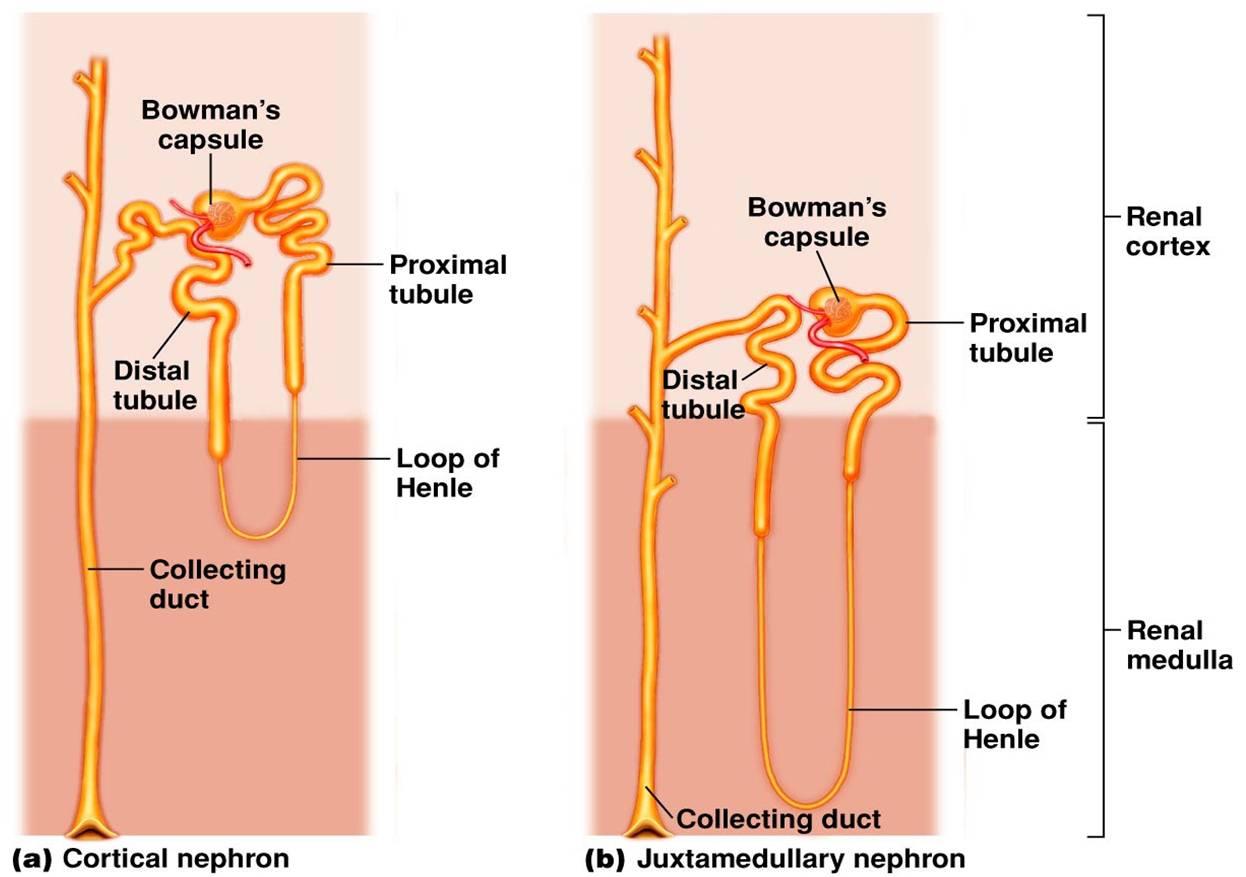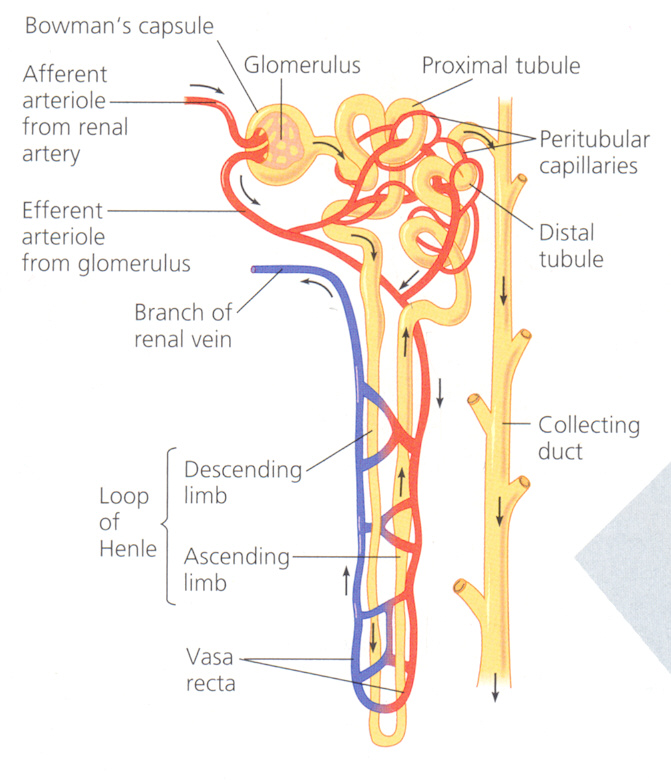What is an adaptive feature of nephron in a desert mammal, like camel?
1 Answer
**The nephrons in desert mammal Camel are equipped with well developed Henle's loop and number of juxtamedullary nephrons in kidneys is very high, about 35% (in man this number is about 15%). **
Explanation:
Desert mammals do not readily find water, hence they must excrete very less amount of water. They are able to produce highly concentrated urine.

( )
)
From the accompanying diagram you would be able to see that the Henle's loop of juxtamedullary ( =adjacent to medulla of kidney) nephron goes deep down into the medulla. This is why medulla of camel's kidney is thicker than that of other mammals, but it is most well developed in another desert mammal, the kangaroo rats.
The Henle's loops of juxtamedullary nephrons along with counter flowing blood vessels, called vasa recta, help in conservation of water.

( )
)
Blood first flows along ascending limb of Henle, which is impermeable to water. Solutes can leave the filtrate and enter the blood along this stretch. When this blood flows along descending limb, water is reabsorbed from filtrate but not the solutes. Longer the Henle's loop, more amount of solute will be reabsorbed and hence more amount of water could be removed from filtrate.
